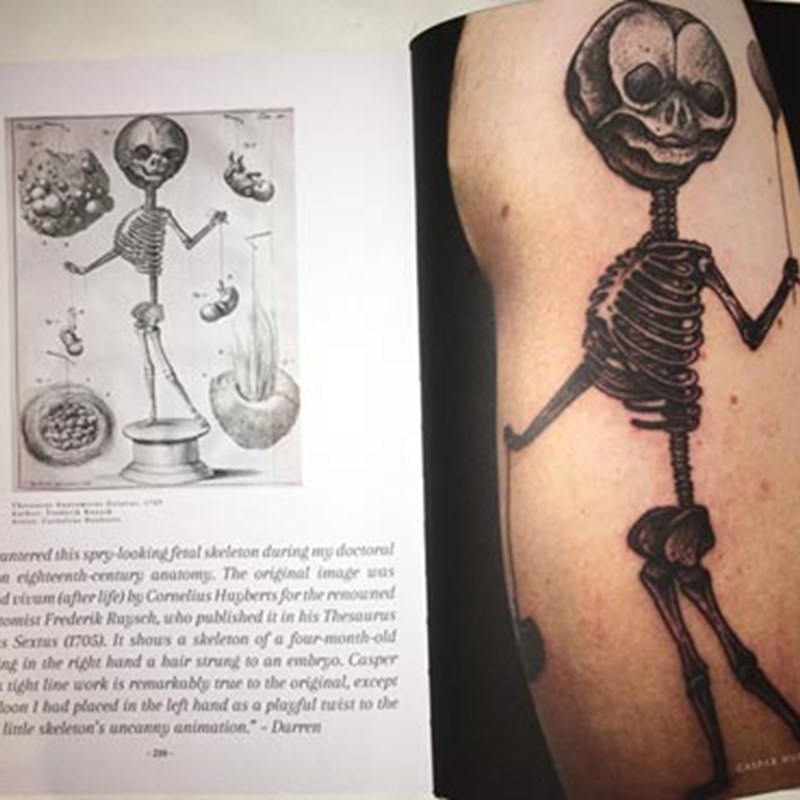The tattoo as legitimate art form: thinking about styles
- art
- styles

Both the exhibition’s curator, art historian Dr Matt Lodder and Nick Schonberger, author of Forever, the New Tattoo, want us to see tattooing as an important, legitimate art form, and to view tattoos as works of art. And, Lodder urges us to think of them as perhaps ‘the best refection we have of the soul of modern life.’
This is something intriguing to think about the ways tattoos are reflective of contemporary anxieties and values, and also specific places and events, as well as being a legitimate part of the history of art. Tattoos are of the moment, are ‘popular,’ and are embodiment's of personal experience, but we should not miss their artistic integrity.
Just as painters and sculptors train at art schools, so too do tattooists undergo a serious apprenticeship, under established tattooists. Also, as with painting or sculpture, tattoo artists train in, and are part of the development and evolution of, stylistic ‘schools’ or ‘genres.’

Today we look at some of these styles, and I urge you to consider how your own tattoo figures, if it does, in this schema. Did you think about these styles, or simply focus on what was personal to you - your interests and experiences?
Also, many of these styles emerged out of a certain time and place – but, in this global twenty-first century, when styles and images are constantly pinged around the world, and tattoo techniques shared across media, is it possible to identify a distinct style of tattoo that is, say, ‘South West England’? Do you see your own tattoo, if you have one, as part of place, of a certain landscape or urbanscape?
American Traditional
This recognisable style is associated with the early twentieth-century tattoos of Norman ‘Sailor Jerry’ Collins. This style recalls American folk art and such archetypical objects as roses, skulls, and yes, ships and sailors. Sailor Jerry’s biography gives us a sense of the tie and place embodied in these tattoos: born in Reno, Nevada in 1911, he was raised in Northern California, hopped freight trains across America, enlisted in the Navy, travelled in South East Asia, worked as a skipper, and played in a band. He settled in Honolulu, Hawaii. This history is there in his work.
Japanese
This traditional heroic style was popular in the Edo period (1600-1868). In the early twentieth-century, it became associated, somewhat to its detriment, with the Yakuza, members of organized crime, as photographed by the French photographer Irina Ionesco. This style often features strong black outlines and typically features images inspired by nature, including koi fish, lotus flowers, cherry blossoms, maple leafs, tigers, and characters from Japanese folklore, dragons and hannya masks, among other things. And to further cement the artistic quality of this style, irezumi, is its origins in medieval and early modern woodblock prints and in the techniques of engravers. In fact, woodblock artists were among the early tattoo artists in Japan: they used many of their engraving tools for tattooing, including chisels, gouges and, most importantly, unique ink known as Nara ink or Nara black.
Realism
Realism and/or naturalism was a very important and long-running nineteenth-century art and literary movement. In contemporary tattooing, realism uses colour, shading and line to present images that might be called ‘proto-photographic.’ We sometimes think of this as the most straightforward - like realist art, it mimics or copies precisely what we see. But realism is much more complicated, and there are different types - magical realism, social realism, etc. - that communicate different things. Also, realism urges us to consider the relationship between the ‘real’ and the image, between ‘original’ and, to use theorist Jean Baudrillard’s term, ‘simulacra.’

New School
Thought to have originated in the tattooing scene of 1970s California, new school revises old school tattooing, and like other art forms, incorporates elements from diverse established traditions including Japanese and American folk art. It is recognisable by its heavy outlines and range of bright colours. Unlike realist tattoos, these feature exaggerated details, or merge realist elements with hyperbolic ones. In this they are reminiscent of cartooning and graffiti art. In some ways, this style reminds me of the way pop culture infiltrated ‘high’ art in the work of Andy Warhol and others in 1960's America.
Biomechanical/Anatomical
These tattoos are all about a turn to the body and its interior. These tattoos represent the body as machine, the organic body fused with machine parts, or refer to the history of anatomical representation. These images are often tattooed freely and placed in ways that reveal a close attention to the body itself. They can have a relationship to film, too: think of the Steampunk versions of neo-Victorian shows and films, or of the 1996 film, Crash, film written and directed by David Cronenberg and based on J. G. Ballard's 1973 novel of the same name.








